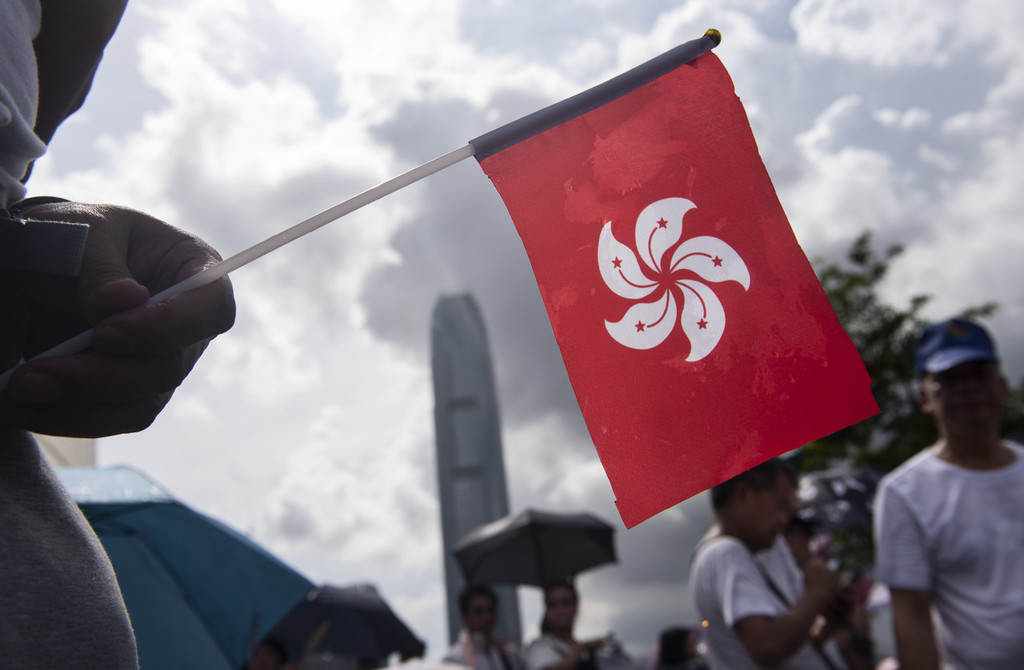China's 'one country, two systems' faces a grim test


The political chaos caused by the opposition camp since March with the excuse of blocking the legislative process of the extradition law amendment bill is no doubt a Hong Kong version of “color revolution”. Former chief executive of the SAR government and vice-chairman of the Chinese People’s Political Consultative Conference National Committee Tung Chee-hwa said in a recent speech that the masterminds of the Hong Kong version of “color revolution” are very likely the US government and the pro-independence government in Taiwan. It is widely known that the Tsai Ing-wen-led Taiwan government has always followed instructions from the US government faithfully, which has played a decisive role in Hong Kong’s latest political crisis far more than any other foreign government.
That is why some people have called the ongoing violent anti-government campaign a “bauhinia revolution”. In my opinion, however, given the fact that most if not all participants wore black attire from head to toe, it should be labeled a “black revolution”.
The first stage of the “black revolution” began on June 9, when large-scale violent attacks on government offices and police officers guarding them broke out after a peaceful march. It had two characteristics. First, the organizers of the violent protests used the slogan “No Extradition to China” as their rallying call. The second was using peaceful assemblies and protest marches as excuses to gain police permission and attract a large crowd but followed it with violent attacks by radical extremists.
On July 1, a large number of radical extremists broke into the Legislative Council Complex and did extensive damage to the premises, including defacing the Hong Kong Special Administrative Region Emblem, before taking some of the computers and documents when they finally left. They also made an outrageous political statement outside the LegCo Complex by replacing the national flag with a black flag and lowered the HKSAR flag to half-mast, signaling to the world the anti-extradition law amendment bill campaign had shifted its objective to challenging the constitutional authority of the State and paralyzing if not destroying the SAR government. Meanwhile, the campaign made a turn from basically peaceful, rational and non-confrontational rallies and marches to unlawful acts, including violence and other criminal offenses as the main form of political descent. That incident also signaled the “black revolution” had entered its second stage.
On the night of July 21, radical extremists blocked the front entrance of the headquarters of the central government’s liaison office at Sheung Wan, smeared the national emblem with black paint and wrote words insulting the People’s Republic of China on the facade of the building. Some of them shouted a familiar slogan: “Liberate Hong Kong; Revolution of our time!” It’s an unmistakable declaration of Hong Kong independence as the ultimate goal first introduced by Edward Leung Tin-kei, leader of a separatist group in the opposition coalition, during the Mong Kok riot in February 2016. By bringing that idea back to prominence in front of the liaison office, they declared the “black revolution” had entered the third stage. And the method of choice from then on has become guerrilla-style violent attacks, since their main objective is to challenge “one country” in the name of “free Hong Kong” now.
On Aug 1, in reply to a question from a reporter, US President Donald Trump used the word 2“riots” to characterize what happened in Hong Kong and admitted it had been going on for too long. However, apparently the excuses the US used to instigate “color revolutions” in the past do not fit Hong Kong’s reality today, and Washington is not ready to admit it is actually waging one, even though its “pawns” in Hong Kong have already jumped the gun and declared the riots a revolution.
The reason why Hong Kong’s situation is different from previous “color revolutions” is simple: Unlike those “regimes” Washington has “changed” easily through “color revolutions” tailor-made to topple them, Hong Kong is an SAR of the People’s Republic of China with a capable government that the central government trusts. And Washington knows Beijing is well beyond its subversive efforts after so many failed attempts in the past 70 years. Now, thanks to the internet and social media, the whole world knows hurting Hong Kong with politically motivated violence seems the best way to annoy China as long as possible.
“One country, two systems” is an important part of socialism with Chinese characteristics, with the main body of the nation practicing its socialist system while the two SARs of Hong Kong and Macao maintain their capitalist system under the overall jurisdiction of the Central People’s Government. It is a bona fide system innovation the world has never seen before. As all societies do, the Hong Kong SAR has to deal with many governance challenges, as the Macao SAR has to its own, over the years. There is no question the “black revolution” is the toughest of the challenges for Hong Kong so far and extraordinary times call for extraordinary measures. No matter what measures Beijing will take to restore peace and stability in Hong Kong, people can rest assured they will follow the Basic Law of the HKSAR faithfully as always.
The author is a senior research fellow of China Everbright Holdings.


































